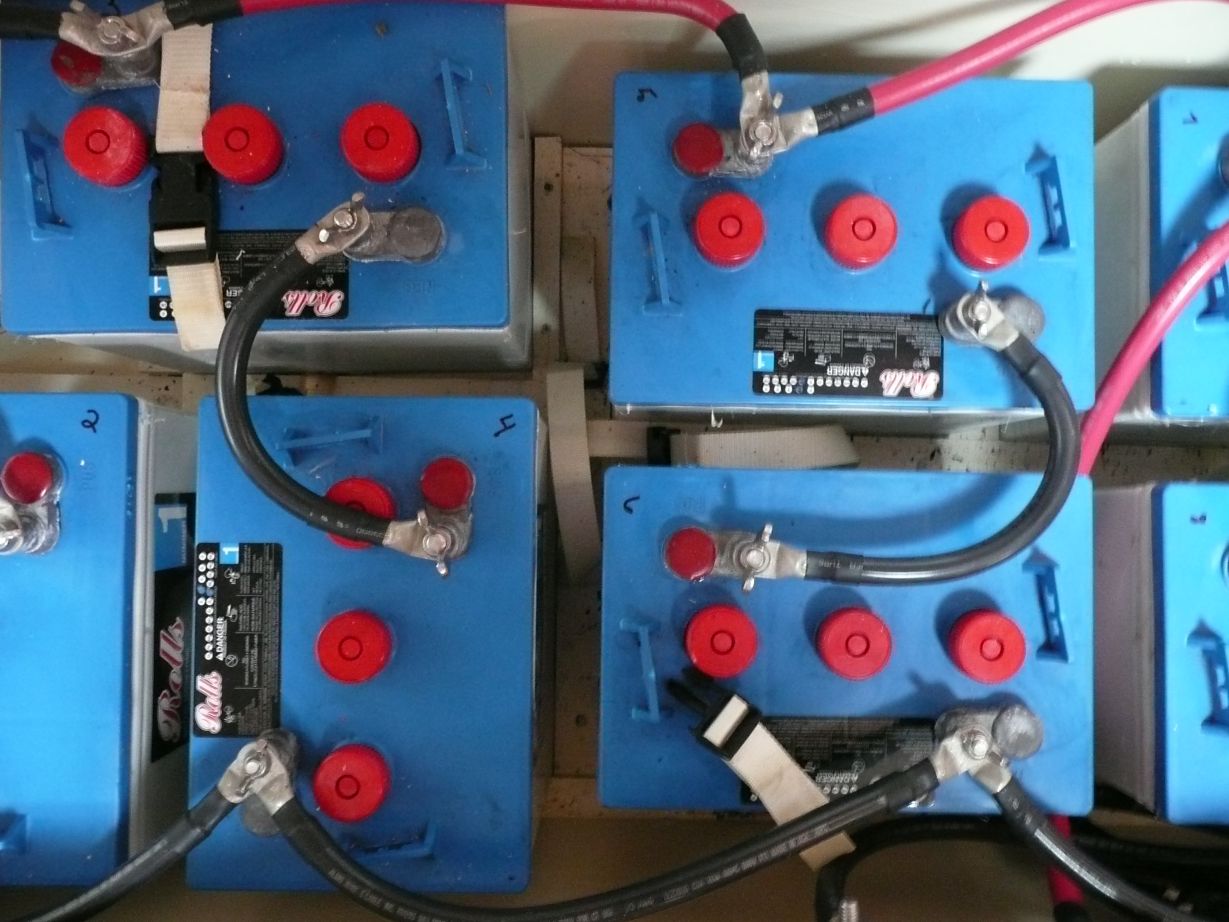When I first bought a digital camera more than a decade ago, the photo results were mediocre. It’s no secret that digital cameras have come a long way since then. The photos are high quality. The optical zoom capabilities are outstanding without adding extra lenses. Image stabilization eliminates tremors when using the high magnification, so you don’t always need to rely on a tripod. The results are immediate and can be stored easily. Most important, we’ve found that digital cameras have many more uses than just taking great sailing photos to show our friends.
 |
|
Marcie Connelly-Lynn |
|
A digital camera can document how pieces of voyaging gear, like the battery setup above, go together, easing re-assembly. |
While offshore, we’ve used our digital camera on many occasions to confirm the name on a ship’s transom or its country flag when we couldn’t quite decipher it using binoculars because of the motion of the boat. Optical zoom coupled with image stabilization makes getting a clear shot easy, even for non-professional photographers. There have been times when something floating in the distance is definitely something to be avoided. Identifying exactly what it is becomes not only important to us, but also provides the necessary information to alert the local Coast Guard and other cruisers in the area of a floating obstacle. In one case, a huge plastic oil tank about half the size of the boat was just bobbing in the water and we identified it with a photo long before we could see it with a naked eye.
Closer to shore, we frequently take pictures of markers to confirm that we are where we think we are and to get a better look at the coastline. Coastal navigation is certainly made easier and safer by identifying landmarks with certainty. There are times, especially in the South Pacific, when the GPS and chartplotter tell us one thing, but our eyes and the digital camera tell us another. There’s never a doubt about which to trust. Low-lying reefs are easy to miss at a glance, but the camera provides a much closer view and facilitates locating easy-to-miss entry passes and breaks in the reef line.
Have you ever seen a screw just lying on the deck and wondered where it came from? It’s easy to check the stanchions and mast pulpit and hardware at deck level. When you can’t figure out where it came from on deck, the next logical choice is up. The digital camera has saved many a trip up the mast when we confirmed all screws and bolts were in place and just kept looking on deck and eventually found the location for the missing screw. Alternatively, we once identified, in mid-transit across the Atlantic, that an errant screw had come from the spreader and we made haste to make it right. Just recently, we used the camera to help identify a broken sail slide on the mast track. It’s also an easy way to check, in close detail, the condition of the sails when they’re hoisted.
Probably the biggest time saver we’ve found for reassembling whatever we’ve taken apart is to have a digital photo on hand. When we unstepped and refitted our mast a couple of years ago, we photographed every piece of hardware on the mast, boom and spreaders in place before taking it apart. Each location was numbered and the associated hardware was tagged and put into Ziploc bags, so it could be easily identified and located. Whether it be a winch, electrical wire routing, the mast or the engine, we take photos in advance of anything to be disassembled in order to confirm the correct replacement of parts and their orientation. This has saved many a headache and hastens the reassembly process considerably.
We also take photos of all of our personal and boat paperwork. Current U.S. Coast Guard documentation is necessary for proof of ownership and to check into foreign countries. Certificates of insurance are many times required for marinas. When saved as JPEGs, these digital documents are easy to print and avoid the necessity of having a scanner aboard. Additionally, since we’re rarely in the U.S. when documentation papers arrive, my sister photographs the document and sends it and any other important mail she receives via e-mail. This always suffices until it’s convenient to mail originals to us, although we’re finding it less and less necessary to have anything original aboard.
Sure, there are image stabilized binoculars now, but the starting price for the low end models is about the same price as a good digital camera. Binoculars don’t take photos and the amount of magnification offered is significantly less than the newest digital cameras. We prefer to have a camera that has multiple uses.
My current camera is a Canon SX40 HS with 35x optical zoom and 12.1-megapixel resolution. It costs less than US$400. It has an automatic point-and-click mode, as well as several other options for more customized photography.
We highly recommend the Canon, although we’re sure there are several other options out there that are comparable. Optical zoom and image stabilization are two main factors to consider when making a purchasing decision for an onboard camera for the uses that we’ve discussed. We now consider our digital camera part of our essential boat gear.
————
Marcie Connelly-Lynn and her husband David Lynn live aboard their Liberty 458, Nine of Cups. They have sailed more than 71,000 miles since leaving Kemah, Texas, in May 2000.
